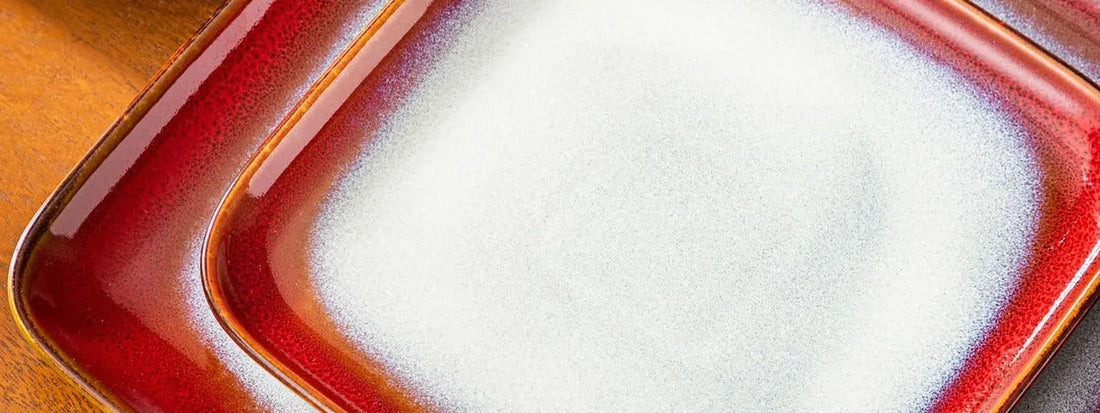
The importance of glazes: types and applications
Share
Reading time: 8 min
In the world of ceramics, glazes are a crucial element that influences not only the aesthetic appeal but also the functionality of ceramic products. Whether you are an enthusiastic hobby potter or just want to learn more about the art of ceramic making, understanding glazes is essential. In this blog post, you will learn all about the different types of glazes and their possible applications.
What are glazes?
Glazes are glass-like layers applied to ceramic products to seal and enhance their surface. They consist of a mixture of minerals and metals that fuse when fired to create a solid, often glossy finish. Glazes not only protect against water and wear, but also contribute significantly to the color and texture of the ceramic.
Types of glazes
Choosing the right glaze can make the difference between an ordinary and an extraordinary piece of pottery. Here are some of the most common types of glazes used in pottery making:
Glossy glazes:
These glazes create a mirror-like surface that reflects light, giving ceramics a vibrant, radiant appearance. Glossy glazes are ideal for decorative pieces and tableware that is meant to stand out.
Matt glazes:
In contrast to glossy glazes, matte glazes have a more velvety, non-reflective surface. They give the ceramics an elegant, modern look and are particularly popular in contemporary designs. Matte glazes are often less prone to visible fingerprints and water spots.
Satin glazes:
These glazes offer a medium finish between glossy and matte. They have a subtle sheen and are ideal for ceramics that require a soft, smooth texture without being too shiny.
Raku glazes:
Raku is a special glazing technique traditionally used in Japanese ceramic art. The glazes are heated quickly at low temperatures and then subjected to a reduction process that results in unique, often metallic-looking surfaces. Raku glazes are known for their irregular, unique patterns and colors.
Engobes:
Engobes are colored clay mixtures that are applied to the pottery before firing. They can be used alone or applied under a transparent glaze to create an additional color or textural effect.
Application of glazes
Applying glazes is a creative process that combines both art and technique. Here are some steps and tips on how to apply glazes correctly:
-
Preparation of the ceramic:
Make sure your ceramic pieces are thoroughly cleaned and completely dried before applying the glaze. This will prevent any dust or dirt from affecting the glaze. -
Applying the glaze:
Depending on the type of glaze, application can be done by dipping, brushing or spraying. Each method has its own advantages and can produce different textures and effects. -
Burn:
The firing process is critical to the quality of the glaze. Different glazes require different temperatures and firing cycles. Be sure to treat the glaze according to the manufacturer's instructions for best results. -
Experiment:
Don't be afraid to combine different glazes or develop your own glaze recipes. Experimenting can lead to unique and unpredictable results that make your ceramics special.
Why are glazes important?
Glazes play an essential role in ceramic production, not only in terms of aesthetics but also in terms of functionality. They protect the ceramics from moisture and abrasion, improve the lifespan of the pieces and contribute to hygienic use, especially in tableware. In addition, they allow for an almost unlimited variety of colors and finishes, allowing potters and artists to realize their creative visions.
Conclusion
The world of glazes is as fascinating as it is diverse. From glossy and matte finishes to special techniques like Raku, each type of glaze offers unique possibilities for designing and finishing ceramics. By better understanding the different types of glazes and how to use them, you can take your own ceramic projects to the next level. Whether you're a beginner or an experienced potter, experimenting with glazes opens up countless creative possibilities and adds significantly to the beauty and functionality of your ceramics.
Related Posts
If you want to learn more about the art of ceramics, you may also be interested in these articles:
- DIY: How to make your own ceramics
- Combine ceramic tableware correctly: arrange sets and individual pieces in style
For more information about glazes and their application, these resources may also be helpful:
